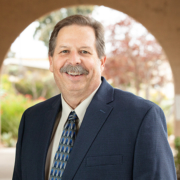After weeks of work, I’m pleased to report that thanks to the improved relationship between the Metropolitan Water District of Southern California (MWD) and the San Diego County Water Authority, along with increased collaboration with other water agencies across Southern California, we helped reduce proposed rate increases to our wholesale water supplies by 7 percentage points over the next two years. This is good news for water ratepayers!
The bottom line is this: Instead of raising wholesale water costs by 17% over the next two years, MWD unanimously adopted consecutive 5% increases. This will allow MWD to cover increasing costs facing every sector of our economy, including our water industry, while limiting the impact on residents and businesses.
Collaboration on water affordability
My thanks to MWD Chairwoman Gloria Gray and MWD General Manager Adel Hagekhalil and their team of dedicated professionals, who heard water agencies’ concerns and presented a lower rate increase proposal that brought the MWD board together. It’s also important to note the role of San Diego County’s delegates, who sit on the MWD Board and played a key role in lowering the costs. These delegates (Lois Fong-Sakai, Gail Goldberg, Marty Miller, and Tim Smith) represent you and worked diligently over several weeks to help gain support from their colleagues for the rate proposal that prevailed.
Water Authority member agencies play key role
I also want to thank the retail water agencies across San Diego County that supported our region’s delegates by sending letters to MWD, including Escondido, Helix, Olivenhain, Otay, Santa Fe, Sweetwater, and Valley Center. It makes a huge difference for the MWD board, which meets in Los Angeles, to see that we are a united region.
Water affordability a priority
Water issues are not simple, and many challenges remain as the Water Authority takes on setting its rates for 2023. We all still face enormous challenges depending on the severity of drought conditions. For example, if Lake Mead water levels continue to drop, the ability to generate hydroelectric power at the Hoover Dam could grind to a halt. The demand and cost of electricity could skyrocket, which could severely affect the cost of water delivery. However, please be assured that your Water Authority Board will continue to make the affordability of water a priority.
(Editor’s note: The Helix Water District, Otay Water District, Olivenhain Municipal Water District, Santa Fe Irrigation District, Sweetwater Authority, Valley Center Municipal Water District, and the City of Escondido, are seven of the San Diego County Water Authority’s 24 member agencies that deliver water across the metropolitan San Diego region.)




